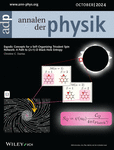Journal list menu
Export Citations
Download PDFs
Cover Picture
(Ann. Phys. 10/2024)
- First Published: 13 October 2024

Self-Organizing Trivalent Spin Network
Spin dynamics in a Loop Quantum Gravity model with self-organized criticality leads to avalanches. Employing ergodic concepts, a perimeter–entropy relation is derived for the dimensionally reduced black hole. This entropy originates from the excitation–relaxation spin dynamics during avalanche cycles. For further details, see article number 2400109 by Christine C. Dantas.
Masthead
Review
Probabilistic Discrete-Time Models for Spreading Processes in Complex Networks: A Review
- First Published: 24 July 2024
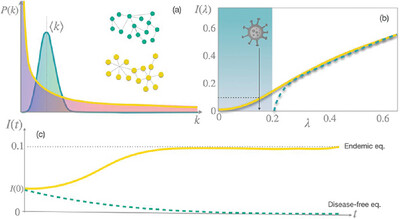
This review explores the Microscopic Markov Chain Approach (MMCA), a probabilistic framework well-suited for modeling epidemic dynamics using discrete-time states. It highlights MMCA's ability to precisely estimate the likelihood of epidemiological states over daily intervals, offering insightful perspectives into the spread of epidemics.
Research Article
Ergodic Concepts for a Self-Organizing Trivalent Spin Network: A Path to -D Black Hole Entropy
- First Published: 16 August 2024
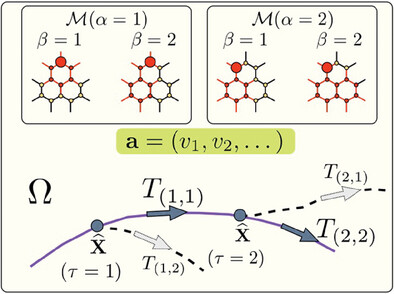
Using ergodic concepts, this work formalizes spin dynamics in a Loop Quantum Gravity model exhibiting self-organizing criticality (SOC). A perimeter-entropy form is derived, which can be reduced to the Bekenstein-Hawking law for the (2+1)-D BTZ black hole by adjusting a potential function in the formalism. The microscopic origin of this SOC entropy is the excitation-relaxation spin dynamics in the avalanche cycles.
Population Fluctuation Mechanism of the Super-Thermal Photon Statistic of Quantum LEDs with Collective Effects
- First Published: 10 July 2024
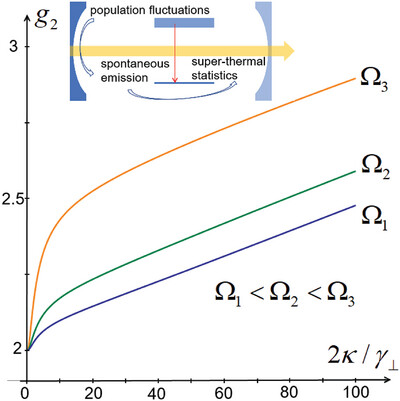
It is predicted, that the active medium population fluctuation effect on the cavity mode spontaneous emission causes the super-thermal photon statistics (g22) in a small quantum super-radiant LED with a bad cavity of the linwidth , which is the active medium transition width, and a strong field-matter coupling .
Transmissions in Gapped Graphene Exposed to Tilting and Oscillating Barriers
- First Published: 23 May 2024
Improved Entanglement-Based High-Dimensional Optical Quantum Computation with Linear Optics
- First Published: 28 July 2024
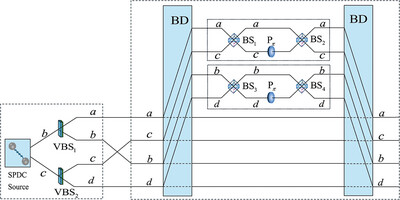
A three-qubit and controlled-SWAP gate with linear optical elements is presented. Moreover, the implementation of a controlled-SWAP gate where the target position is a d-level system is further proposed. It requires less linear optical elements. The optical depth of the program is still five. Moreover, the fidelity of the scheme for the three-qubit controlled-SWAP gate is improved.
Observational Constraints on the Parameters of Hořava–Lifshitz Gravity
- First Published: 28 July 2024
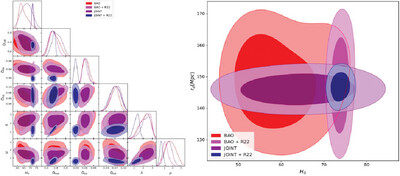
The study analyzed late Universe expansion using the Hořava–Lifshitz (HL) Model with 281 observational data points, optimizing cosmological parameters without CMB priors. It is found km and Mpc for , and km and Mpc for HL. Statistical criteria favor , though HL shows substantial evidence, underscoring the value of alternative models.
Facets of Correlated Non-Markovian Channels
- First Published: 29 July 2024
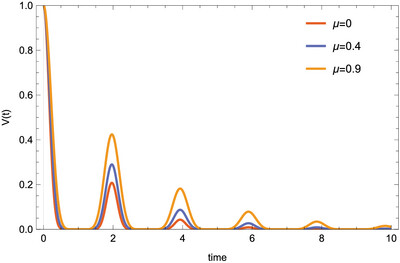
The article delves into the realm of correlated non-Markovian channels, presenting the potential memory resulting from the correlated action of the channels as well as the memory effects arising from non-Markovian dynamics. It reveals the intriguing connection between the channel correlation factor and non-Markovianity, further demonstrating the benefits of memory in error correction.
Quantum Heat Engines with Spin-Chain-Star Systems
- First Published: 30 July 2024

A quantum Otto cycle model using a central atom interacting with multiple Heisenberg spin chains is examined. The system turns into a spin-star model and work, heat transfer, and efficiency for X, XX, and XYZ configurations are studied. The study explores how frequency and coupling parameters affect performance. The X-configuration demonstrates superior efficiency, with increased central atom frequency.
Influence of Fractional and Decay Parameters on the SU(1,1) Quantum System Interaction with Three-Level Atom
- First Published: 31 July 2024
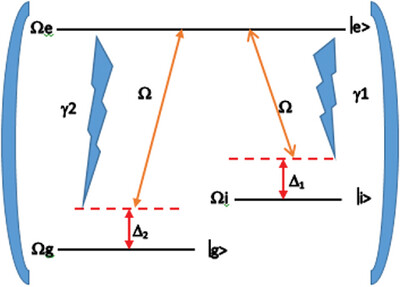
Through the generalized fractional derivative, it is studied how the decay term and the fractional parameter affect the quantum system, specifically the interaction between the SU(1,1) algebraic system and a three-level atom. The influence of decay and fractional parameter on phenomena such as revival and collapse, entropy squeezing, purity, and concurrence are investigated. Results demonstrate how both decay and fractal parameter affect periods of collapse and revival. It is worth noting that the decay parameter shortens the collapse periods, while an increase in the fractional parameter leads to longer collapse periods. The decay parameter also reduces the degree of entanglement between the different components of the quantum system, while increasing the fractional parameter enhances the entanglement within the quantum system.
Unconventional Light-Matter Interactions Between Giant Atoms and Structured Baths with Next-Nearest-Neighbor Couplings
- First Published: 01 August 2024

This paper studies the influence of different types of next-nearest-neighbor couplings on the dispersion relation of the lattice model and the dynamics of the corresponding giant-atom system. By tailoring the next-nearest-neighbor coupling terms, the lattice can be either Hermitian or non-Hermitian, which enable essentially different dynamics.
Logic and Numbers Related to Solar Neutrinos
- First Published: 09 August 2024
The problem of solar neutrinos discovered by Davis allows for one of two fundamentally different solutions. The neutrino oscillation assumption, put forward by Gribov and Pontecorvo, considers electron neutrinos as mixtures of two new massive neutrinos. The notion of a mixture of particles, introduced earlier by Gell–Mann, and Pais, contradicts the principles of classical logic. The Gribov–Pontecorvo assumption is not confirmed by numbers reflecting a comparison of theoretical and experimental results for each of the five observed processes with solar neutrinos. Another solution is based on the hypothesis about the existence of a new interaction involving electron neutrinos and nucleons. In its implementation, logically clear methods of classical quantum field theory are used. The obtained good agreement between theoretical and experimental numbers for all five observed processes.
The Simplified Quantum Circuits for Implementing Quantum Teleportation
- First Published: 14 August 2024
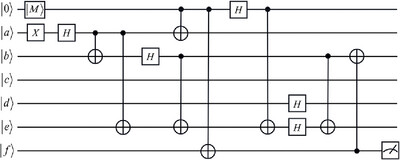
Simplified quantum circuits for teleporting arbitrary single-qubit message via GHZ state, two-qubit cluster state, three-qubit cluster state, Brown state, Borras state, and entanglement swapping are presented. The gate-count/cost/depth is dramatically decreased, and no classical feed-forward recover operation is required.
Heralded and Complete Interconversion Between W State and Knill–Laflamme–Milburn State via State-Selective Reflection with Robust Fidelity
- First Published: 17 August 2024
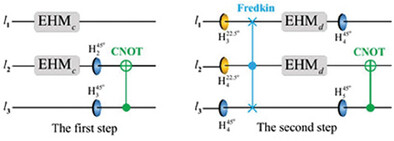
Two protocols for achieving interconversion between W state and Knill–Laflamme–Milburn state assisted by quantum dot (QD)-cavity systems and quantum control gates are proposed. The protocols employ a heralded approach to predict failures and facilitate interaction between the QD-cavity system and photons. The proposed two protocols achieve remarkable utilization of photons and achieve near-unit fidelities and high efficiencies in principle.




